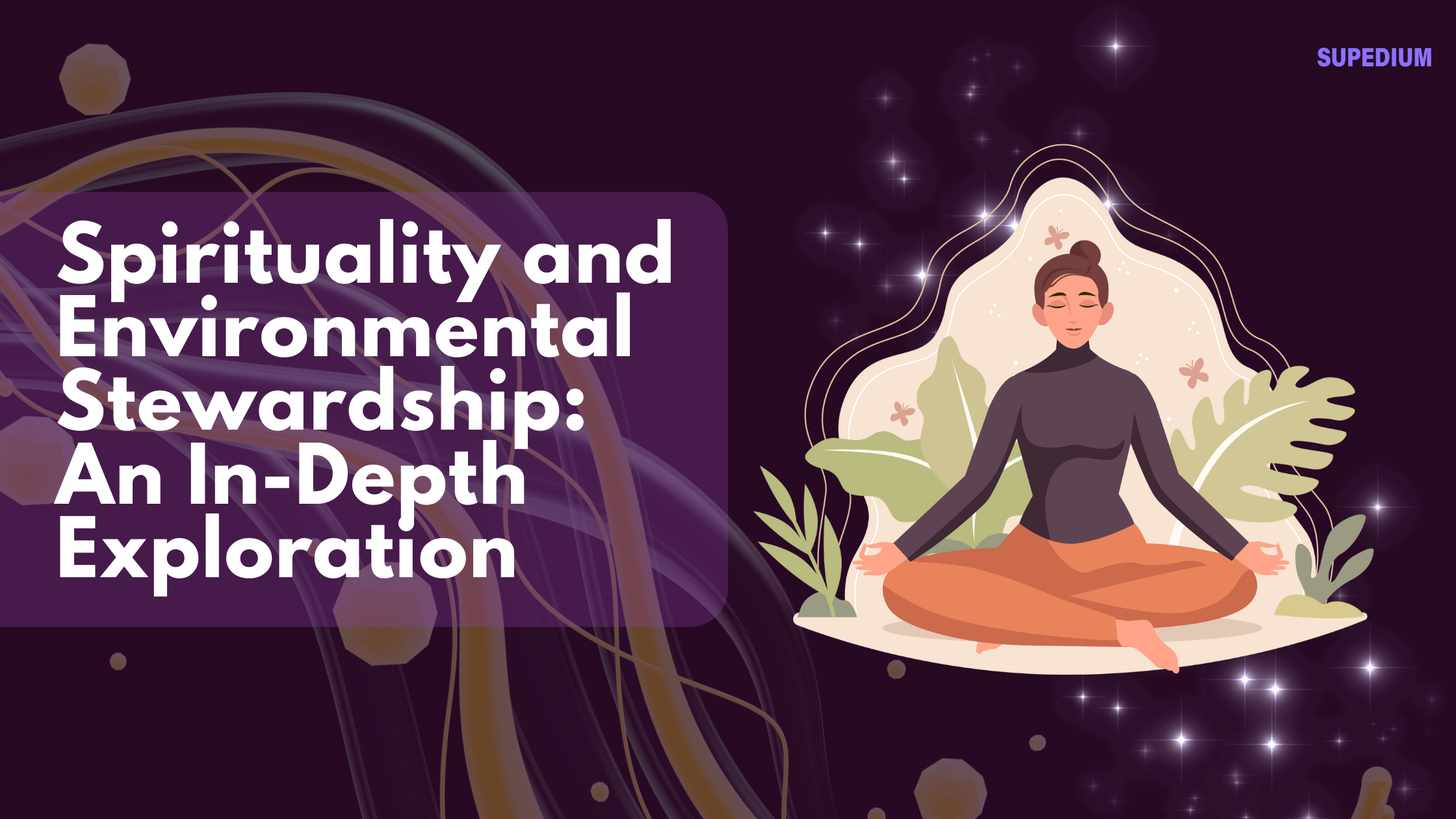Table of Contents
![]()
I. Introduction
In an era marked by environmental challenges and a growing awareness of ecological issues, the intersection of spirituality and environmental stewardship has gained significant attention. Spirituality, often defined as a personal or collective sense of connection to something greater than oneself, contrasts with religion in its more flexible and individualized approach. On the other hand, environmental stewardship refers to the responsible management and care of the natural environment through conservation and sustainable practices. This article explores the relationship between spirituality and environmental stewardship, examining how spiritual beliefs influence environmental practices and the potential for these intersections to foster a more sustainable world.
II. Historical Context
Ancient Spiritual Traditions and Nature
Throughout history, many ancient spiritual traditions have held a deep reverence for nature. Indigenous spiritualities, for instance, often view the natural world as imbued with spiritual significance. Many indigenous cultures practice animism, a belief system that sees all elements of nature—such as animals, plants, and geological features—as having spiritual essence. Similarly, ancient philosophies like Taoism in China and Shinto in Japan emphasize harmony with nature and the sacredness of natural processes.
Religious Teachings on Nature
Various religions have long recognized the importance of nature in spiritual life. Christianity, for example, has teachings that stress humanity’s role as caretakers of the Earth. Biblical passages such as Genesis 2:15 highlight the responsibility to “tend and keep” the Garden of Eden. Hinduism views the Earth as a goddess, Prithvi, and teaches that living in harmony with nature is a form of spiritual practice. Buddhism, with its principle of interdependence, encourages a compassionate attitude toward all living beings. Islam also emphasizes environmental stewardship, with the Quran describing the Earth as a trust from God, requiring responsible care.
III. Spiritual Perspectives on Environmental Stewardship
Nature as a Spiritual Entity
Many spiritual traditions see nature as a manifestation of the divine or as possessing its own spiritual significance. In these perspectives, natural sites and landmarks are often considered sacred. For example, many Indigenous cultures revere specific landscapes or natural features as spiritual ancestors or deities. This view fosters a sense of responsibility to protect and preserve these sacred spaces.
Spiritual Practices that Promote Environmental Awareness
Spiritual practices such as meditation and mindfulness can deepen one’s connection to nature and heighten environmental awareness. Practices like forest bathing or nature meditation help individuals experience a profound sense of interconnectedness with the natural world. Rituals and ceremonies, such as those performed by Native American tribes or various Earth-centered traditions, honor the Earth and express gratitude for its resources.
The Role of Spiritual Leaders in Environmental Advocacy
Spiritual leaders and communities have played pivotal roles in environmental advocacy. Figures such as the Dalai Lama have spoken about the importance of ecological balance and the moral imperative to protect the environment. Interfaith organizations have also emerged, bringing together various spiritual traditions to address environmental issues collaboratively.
IV. Modern Spirituality and Environmentalism
Contemporary Spiritual Movements
In recent years, a growing movement known as eco-spirituality has emerged, blending spiritual practices with environmental activism. Eco-spirituality emphasizes the sacredness of the Earth and advocates for environmental protection as a spiritual duty. New Age spiritual practices often incorporate environmental themes, focusing on personal and collective transformation to foster a more sustainable relationship with nature.
Case Studies of Spiritual Organizations and Environmental Initiatives
Several spiritual organizations have undertaken significant environmental initiatives. For instance, the GreenFaith organization works with various faith communities to promote environmental justice and sustainability. The Catholic Church has also been active in environmental advocacy, notably through Pope Francis’ encyclical “Laudato Si’,” which calls for urgent action on climate change and environmental degradation.
The Influence of Spirituality on Personal Environmental Practices
On an individual level, spiritual beliefs can profoundly influence lifestyle choices and environmental practices. For many, spirituality fosters a sense of responsibility and motivation to live more sustainably. Personal transformations often involve adopting practices such as reducing waste, supporting sustainable agriculture, and engaging in local conservation efforts.
V. Challenges and Criticisms
Conflicts Between Spiritual Beliefs and Environmental Practices
Despite the positive aspects, there can be conflicts between spiritual beliefs and environmental practices. Misinterpretations of spiritual teachings might lead to actions that harm the environment, such as excessive resource use under the guise of spiritual entitlement. Additionally, tensions sometimes arise between spiritual and scientific perspectives on environmental issues.
Criticisms of Eco-Spirituality
Eco-spirituality has faced criticisms, including allegations of greenwashing—where environmental concerns are superficially addressed for public relations rather than genuine commitment. Critics argue that spiritual approaches alone may not be sufficient to address the scale of environmental problems, highlighting the need for scientific and policy-based solutions alongside spiritual practices.
VI. Future Directions
Enhancing Collaboration Between Spiritual and Environmental Movements
There is significant potential for collaboration between spiritual and environmental movements. Dialogue and partnership can lead to innovative solutions and a more integrated approach to environmental stewardship. Joint initiatives, such as interfaith environmental campaigns and spiritual-environmental conferences, offer opportunities for shared learning and action.
Innovations in Spiritual Practices for Environmental Sustainability
Future trends in spirituality may see further innovations aimed at addressing environmental concerns. Emerging practices might include more explicit integration of environmental sustainability into spiritual rituals and teachings. These innovations could help bridge the gap between spiritual ideals and practical environmental actions.
VII. Conclusion
The relationship between spirituality and environmental stewardship reveals a profound connection between our inner lives and our external actions. Spiritual perspectives often provide a framework for understanding and addressing environmental issues, emphasizing the sacredness of nature and the moral imperative to protect it. By embracing these spiritual insights and fostering collaboration between spiritual and environmental movements, we can work towards a more sustainable and harmonious relationship with the natural world.
Share This





Be the first to comment